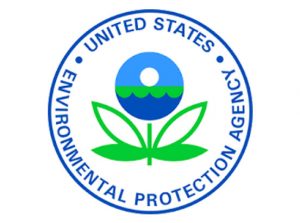California Storage vs. Satellite Accumulation Area Date Requirements
How many dates need to go on a hazardous waste container?

A recent question came across my desk from one of our clients in California. They asked whether they needed to put multiple dates on their hazardous waste containers. They mentioned that an inspector was giving them a notice of violation because they moved satellite containers to their central accumulation area and did not have dates reflecting each accumulation start date. Let’s take a look at this from the perspective of the Federal EPA and the States of California and Washington.
Satellite accumulation is one method many generators use to manage their hazardous waste. Satellite accumulation allows generators to accumulate up to 55 gallons of hazardous waste (or 1kg of certain types of hazardous waste) in containers at or near the point of generation. These points of generation are considered satellite accumulation areas (SAA). Areas not subject to the SAA allowance are considered central accumulation areas (CAA). It is important to note that the EPA does not have a time limit for SAA waste. Central Accumulation Areas have accumulation time limits of 90/180/270 days, depending on their status as either a large quantity, small quantity or very small quantity generator.
FEDERAL (40 CFR 262.15, 262.16, 262.17)
The EPA restricts the accumulation of hazardous waste in an SAA to 55 gallons or 1 kg of EPA acutely hazardous waste. SAA containers must be marked with the words “Hazardous Waste”, and an indication of the hazards of the contents. Once the generator accumulates waste in excess of 55 gallons or 1 kg, they must manage the waste under CAA rules within 3 days. In addition, these SAA containers must be marked with the date the excess accumulation of waste began. Once the waste is moved to the CAA, it must be marked with the date the CAA accumulation period began. Why more than one date? The regulations require the container be marked with “The date upon which each period of accumulation begins…” [40 CFR 262.16(b)(6), 262.17(a)(5)].
CALIFORNIA (22 CCR 66262.34)
It is important to note that California has a 1-year accumulation limit for SAAs (22 CCR 66262.34(e)). And restricts the accumulation to 55 gallons of hazardous waste or 1 kg of EPA acutely hazardous waste or 1 kg of California extremely hazardous waste. A California SAA container must be marked with the words “Hazardous Waste”, an indication of the hazards of the contents, the generator’s name and address, composition of the waste, the physical state of the waste and the initial date of accumulation. Once the 55 gallons (or 1 kg) is reached, the waste must be managed under the CAA rules within 3 days. In addition, these SAA containers must be marked with the date the excess accumulation of waste began [22 CCR 66262.34(e)(3)]. Once the waste is moved to the CAA, it must be marked with the date the CAA accumulation period began. Why more than one date? The regulations require the container be marked with “The date upon which each period of accumulation begins…” [22 CCR 66262.34(f)(1)]. Bear in mind, California restricts the waste accumulation to either the 1-year accumulation limit or the 90/180/270 day accumulation limit…whichever comes first [22 CCR 66262.34(e)].
WASHINGTON (WAC 173-303-200)
Washington restricts the accumulation of hazardous waste in an SAA to 55 gallons or 1 kg of EPA acutely hazardous waste. An SAA container must be marked with the words “Hazardous Waste” or “Dangerous Waste” as applicable, and an indication of the major risks of the contents. Once the generator accumulates 55 gallons or 1 kg, these SAA containers must be immediately marked with the date the accumulation volume was reached and moved to the CAA within 3 days [WAC 173-303-200(2)(b)]. Once the waste is moved to the CAA, it must be marked with the date the CAA accumulation period began. Why more than one date? The regulations require the container be marked with “The date upon which each period of accumulation begins…” [WAC 173-303-200(1)(c)].